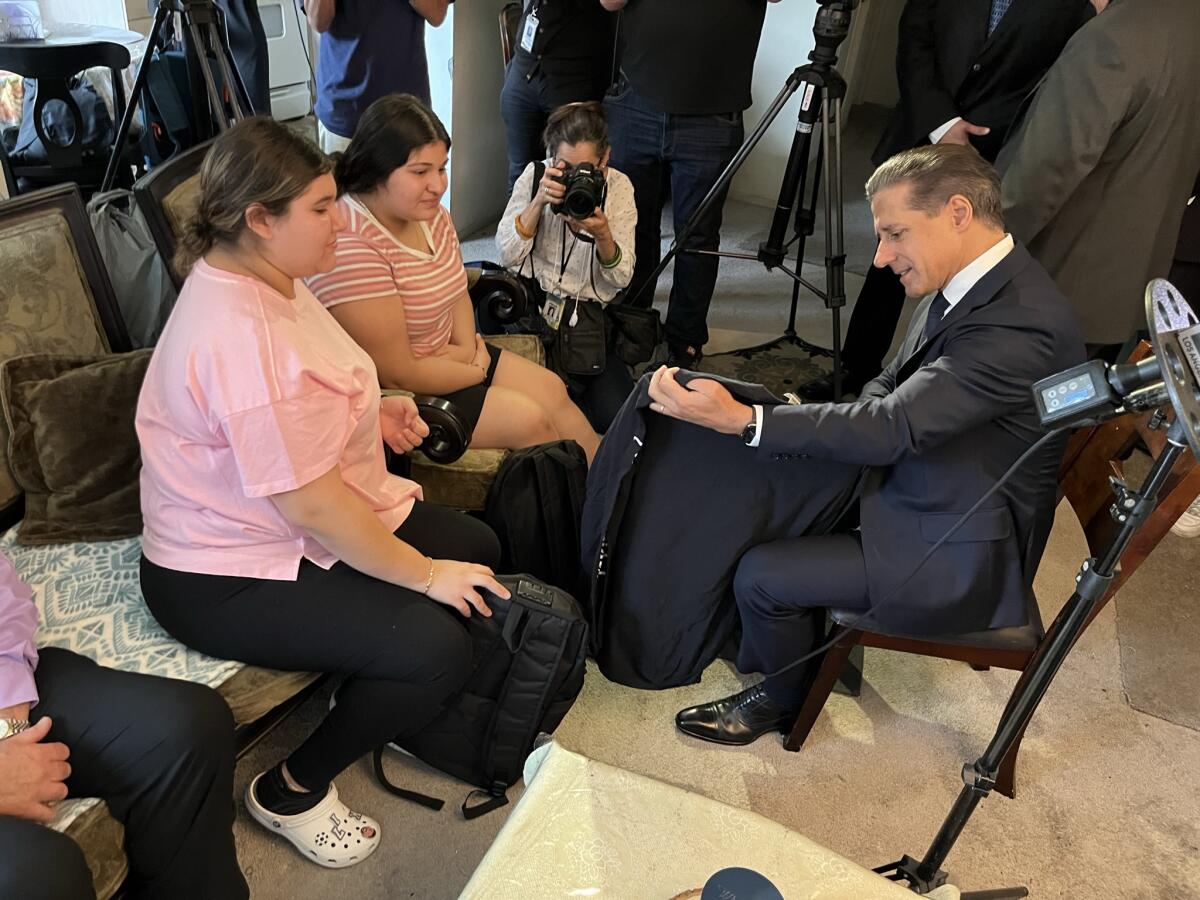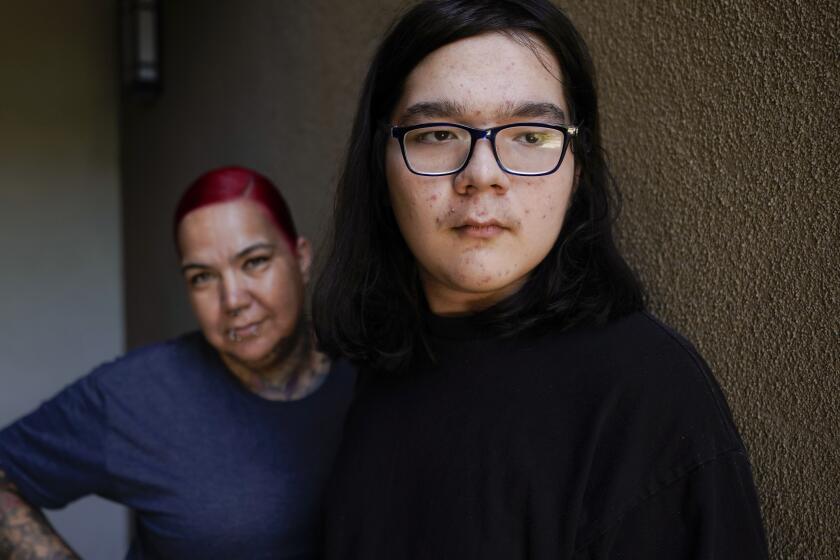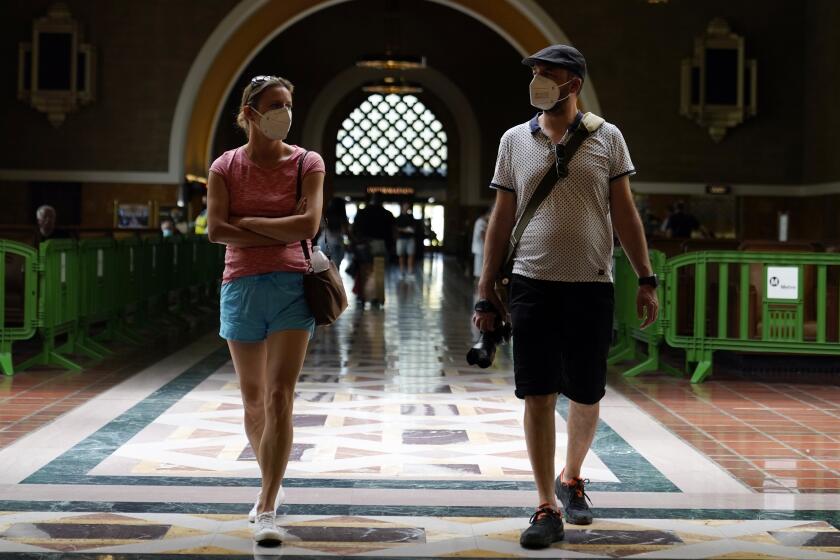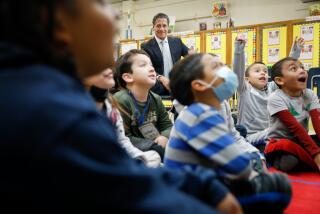Got a cold, runny nose, the sniffles? No worries! Come to school, LAUSD says

- Share via
In a reversal from recent pandemic-era school years, Los Angeles schools Supt. Alberto Carvalho is urging students to come to school sick — at least if they are just a little sick — to combat high rates of absences that officials fault for harming mental health and holding back learning.
If a student has a fever, however, they need to stay home.
For parents and employees, the reversal is a sort of cognitive whiplash for a school system that took pride in having among the strictest school safety protocols in the nation: mask mandates, 10-day illness quarantines, weekly COVID-19 testing — and directives to keep students home at any sign of illness.
County health officials put the current risk from COVID as low based on hospital admissions, although there’s been a recent uptick in hospitalizations and in measures of the virus in wastewater. County health officials warn that the start of school has led to increased COVID outbreaks in recent years and could do so again. The first day of school in L.A. Unified is Monday.
In a related development, Carvalho strongly hinted that district rules that require employees to vaccinate for COVID-19 will be eased. The mandate cost more than 700 employees their jobs.
Carvalho said he is responding to evolving imperatives.
“I understand maybe the surprise of some parents, but we have always been informed as a school system by the expert voices of medical entities,” Carvalho said Friday. “Times have changed. Conditions have changed and the recommendations of protocols have shifted as well.”
He painted something of a back-to-normal pre-pandemic outlook, when it would make sense to keep a child with a fever at home.
“We’re back at a point — based on high levels of vaccination, therapeutics available and children’s higher resiliency than most — where if a child is mildly sick — no fever, just maybe the sniffles — it is OK for them to go to school,” he said. “There are ways of mitigating against that: some good meds, a mask and monitoring.”
Carvalho said the trade-off of erring too much on the side of caution is great.
“The physical threat of COVID has been by far replaced with the mental consequences as attached to the lack of consistent attendance in school,” he said. “We cannot continue in an environment where 40% of our kids are chronically absent.”
California had among the highest increases in chronic absenteeism in the country, about 1 million additional students were chronically absent when compared with the year before the pandemic.
His listed the mental-health harms of being out of school that have been cited by authorities, including U.S. Surgeon General Vivek Murthy: “Anxiety, depression, social-emotional stressors, suicidal ideation.”
The superintendent also noted a financial impact. If the current 90% daily attendance rate rose to 95% — which it was pre-pandemic — the result, he said, would be $300 million more in state funding, which is largely based on attendance.
Carvalho spoke on a day when he took part in two home visits in North Hollywood with students who had poor attendance last year, including an eighth-grader who missed 40 days of school. Her mother, Marissa Garcia, said both of her daughters had trouble keeping up with studies during the pandemic and also adjusting once school resumed. But the single mother said she and her daughters would redouble efforts to get the most out of school.
Carvalho’s message had support from a local pediatrician who is a spokesperson for the American Academy of Pediatrics.
“Kids will get many mild illnesses throughout the school year and — just as I always said prior to the pandemic — if we kept kids home every time they had the sniffles, they’d miss too much school,” said Dr. Tanya Altmann, a Calabasas pediatrician. “Of course the pandemic changed things the past two years, but now that the serious threat of severe illness with COVID has passed, we need to get back to keeping kids in school and not being afraid of every cough and sneeze.”
Veteran L.A. school nurse Stephanie Yellin-Mednick supported Carvalho’s overall message but added that it remained important for families to test for COVID when students have symptoms — and to keep students home for five days if they test positive.
Amid the latest coronavirus uptick in California, health officials reiterate the same advice: Masks work, but it’s a personal preference whether to wear them.
A teachers union spokesperson said Carvalho should have put more emphasis on wearing a mask when sick.
People “could have sniffles because they have COVID — or because they have a cold, beginnings of the flu, etc.,” said Vice President Julie Van Winkle. “Either way, we think it’s important for the leader of our district to encourage everyone who isn’t feeling 100% to wear a mask to limit the spread of any illness they may be carrying.”
She added: “Of course, we want students to attend school whenever possible, but we also want to make sure that all our students and employees — including those who are immune-compromised — are safe at school. COVID didn’t go away — nor did other illnesses — and there are still folks reeling from long-term health impacts.”
The immediate reaction from parents and employees was varied.
If her third-grader has a cold but feels fine, “she will go to school,” said Basia Richard. “If she has a fever, she stays home until fever-free for 24 hours... If she has a cold but doesn’t feel strong, she stays home. I would end all COVID measures!”
“The dividing line he proposes makes sense,” said Pam Schmidt, who is raising grandkids and is wary of children exaggerating mild symptoms so they can stay home.
“Children who are sick should be kept home, especially the littles,” said Crystal Rios, a parent and district instructional aide. “It breaks my heart when they can’t even talk, participate, or play without having a cough attack or boogies constantly running down their noses.”
“I will keep my son at home if he is under the weather … period!” said Kim Serrano.
“If there has to be a dividing-line metric, I think having a fever is a good one,” said Davida Ross, parent of a 10th-grader. “I would also include vomiting and discolored mucus but recognize those may be harder to quantify than a fever. Now that being said, there are plenty of parents who pump their kids up with fever-reducing medication and send them in.”
A longtime substitute teacher said she thinks that “kids should test and should not come if sick with COVID or sick coughing, sneezing, temperature or not.” She recounted how she contracted COVID in a classroom while filling in for a teacher who had left the day earlier with the illness.
“Many parents make decisions to the extremes,” said Elizabeth Gay Lannon, who is helping raise two grandchildren. “Some keep every sneeze home. Some send them to school after they threw up and have a 101 temp. Our elementary school has not had a nurse more than one to two days per week, so office staff and teachers have to decide.”
More to Read
Sign up for Essential California
The most important California stories and recommendations in your inbox every morning.
You may occasionally receive promotional content from the Los Angeles Times.
















